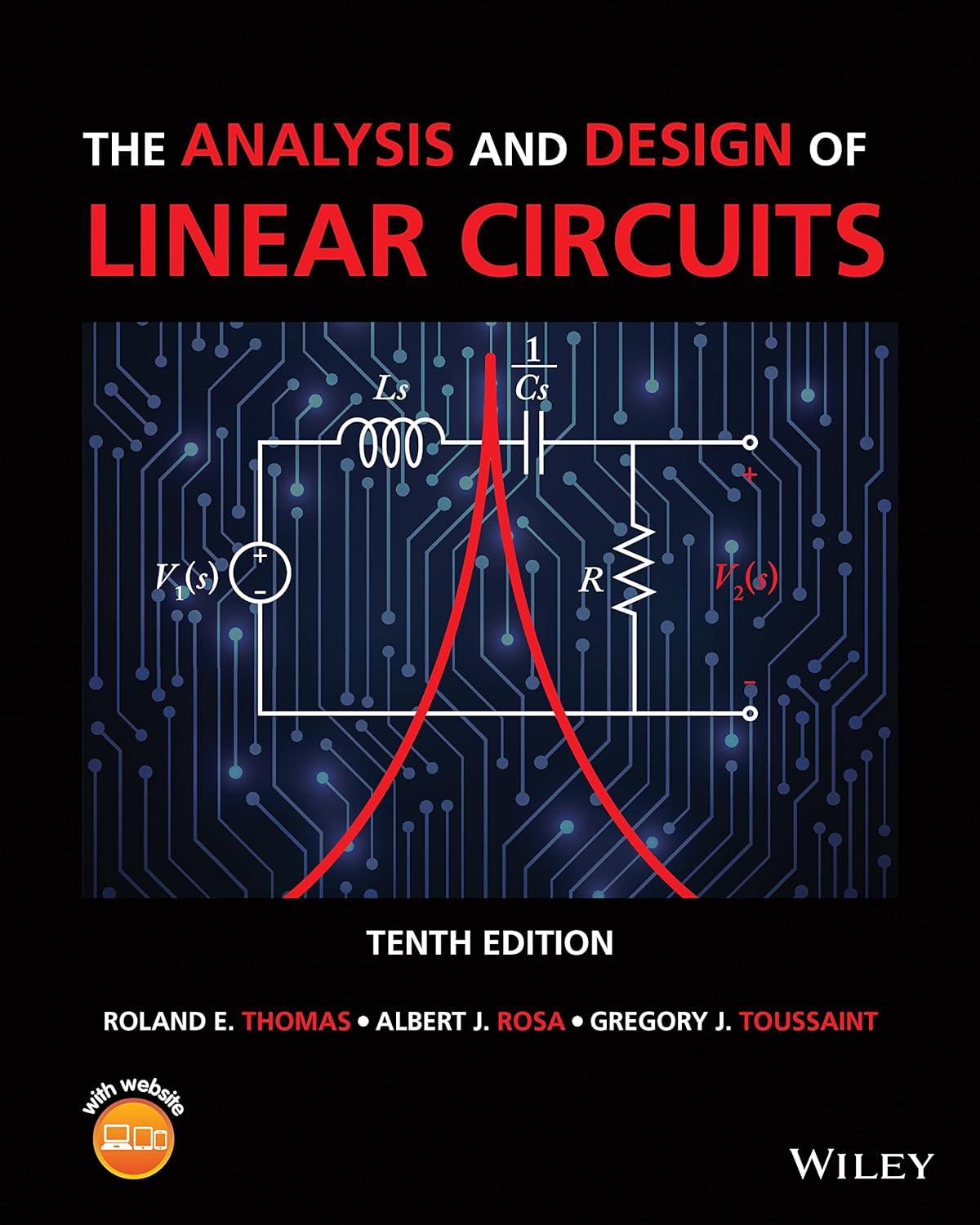You have successfully completed the first course in Circuits I, and as part of an undergraduate work-study
Question:
You have successfully completed the first course in Circuits I, and as part of an undergraduate work-study program your former professor has asked you to help her grade a Circuits I quiz. On the quiz, students were asked to find the power supplied by the source both to the \(10-\mathrm{k} \Omega\) load \(\left(R_{\mathrm{L}}ight.\) ) and to the entire circuit as shown in Figure P3=5으 . Your professor asks you to help her by creating a grading sheet.
(a) Solve the quiz and establish reasonable A, B, C, D, and F cuts for incorrect solutions.
(b) A particular student correctly finds the Thévenin equivalent circuit seen by the resistive load and calculates the power to the load using \(v_{\mathrm{T}}{ }^{2} / R_{\mathrm{L}}\). He then does a source transformation, correctly finding the Norton equivalent of the circuit. He calculates the source power using \(v_{\mathrm{T}} \times i_{\mathrm{N}}\). What grade would you give him?
(c) Another student finds \(p_{\mathrm{L}}=5.625 \mathrm{~mW}\) and \(p_{\mathrm{S}}=22.5\) \(\mathrm{mW}\), but provides no work to justify her answers. What grade would you give her?
(d) A third student first finds the Norton equivalent, and then finds the current through the load using a current divider and calculates the power in the load using \(i_{\mathrm{L}}{ }^{2} \mathrm{R}_{\mathrm{L}}\). He figures correctly what the parallel voltage would be across the Norton circuit and the load \(v_{\mathrm{L}}\), and then calculates \(p_{\mathrm{S}}=i_{\mathrm{N}} \times v_{\mathrm{L}}\). What grade would you give him?
Step by Step Answer:

The Analysis And Design Of Linear Circuits
ISBN: 9781119913023
10th Edition
Authors: Roland E. Thomas, Albert J. Rosa, Gregory J. Toussaint





